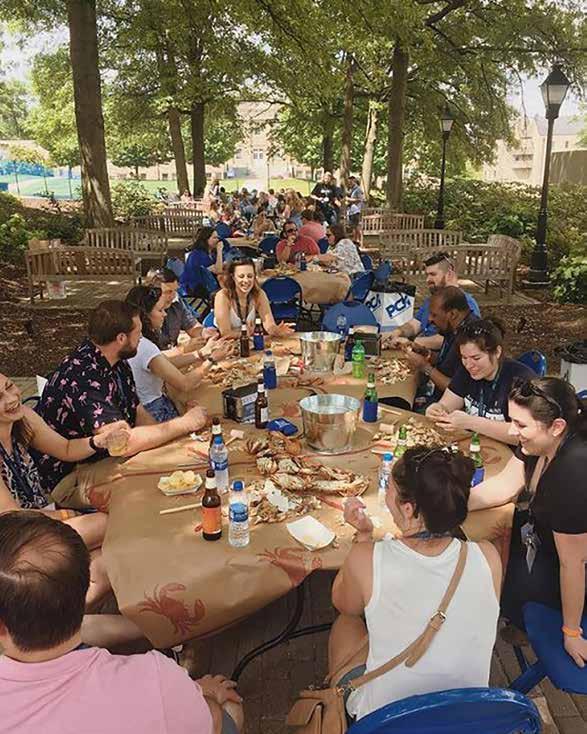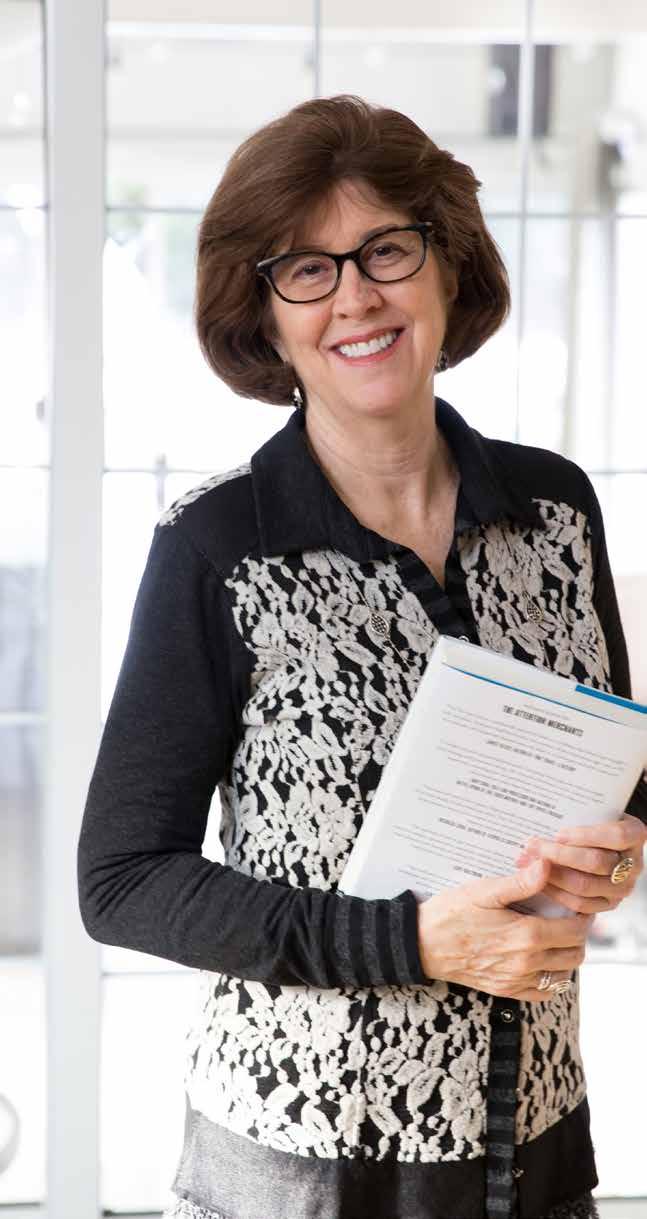In Dr. Dmitrii Katsay's engineering laboratory with his autonomous humanoid robot, Vanya.
I bagged my first Russian bear while peddling through the Gagarin Forest.
Stalin as Tankograd, Chelyabinsk became one of the six “closed” cities during Soviet times, off limits to foreigners. Hence, my presence was a novelty, with people asking me why I had come to this distant outback, known as the “most contaminated place on the planet,” referencing the extreme industrial pollution and radioactive poisoning from the massive nuclear meltdown in 1957. There was never a dull moment. I enjoyed being in a bustling city of 1.3 million people, taking the bus or trolley to work and exploring the city on weekends. A trip to the 350-millionyear-old Ural Mountains with its still-frozen lakes, turquoise quarries, caves (made of marble!), and rolling mountains was refueling. There is plenty of space here to create and reflect. Maybe that is why Russia has been home to many renowned writers, poets, scientists and composers. The setting provided a fertile backdrop for my Fulbright projects, one of which connected me with Russian engineers who, like me, were teaching with a robot. We discovered that between 2014 and 2019, two similar research experiments were being conducted simultaneously on two sides of the planet, unbeknownst to the respective researchers. In Russia, engineers, computer scientists and linguists had purchased an autonomous humanoid robot from France in 2014 to explore ways to use a robot as a teaching tool in the linguistics classroom. In the same year, I purchased an autonomous humanoid robot from Japan to explore how to teach with a robot in the business classroom. We were at once surprised and delighted to discover the overlap in our research methods and conclusions. The realization of our multiple discoveries sparked the creation of a multi-national, multi-disciplinary collaborative research initiative to continue advancing knowledge on best ways to use autonomous humanoid robots to boost learning in university classrooms.
Celebrating graduation with colleagues in the Department of Economic Security.
Another interesting project was writing a textbook for Russian professors to stimulate thinking on experiential teaching methods with “new century” students—born post-2000—who demand more from professors than their predecessors. The book explores effective ways to facilitate deep learning, heighten student interest in course content, boost classroom participation, deepen long-term retention of new knowledge and spark scholarly research. Senator J. William Fulbright was a person ahead of his time—appreciating the value of prolonged time with fellow teacher-scholars—when he lobbied to create the Fulbright Scholar Program in 1946. Fulbright is a firstrate organization. I returned home swirling with new knowledge and insights, eternally appreciative of my interactions with all the people who were an integral part of the journey. This Fulbright experience left me with a new appreciation for what Russians have to teach us. Their notable generosity, endurance and patience shed light on ways that all of us, not just scholars, might see our way forward on planet Earth in the life-changing decades to come.
Get in touch! To learn more about the Fulbright Scholar Program, contact Dr. Flynn at pflynn@msmary.edu.
FALL 2019 FEATURE STORY
25












